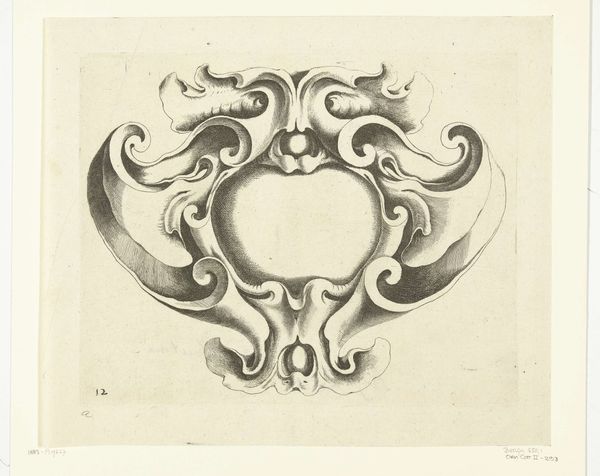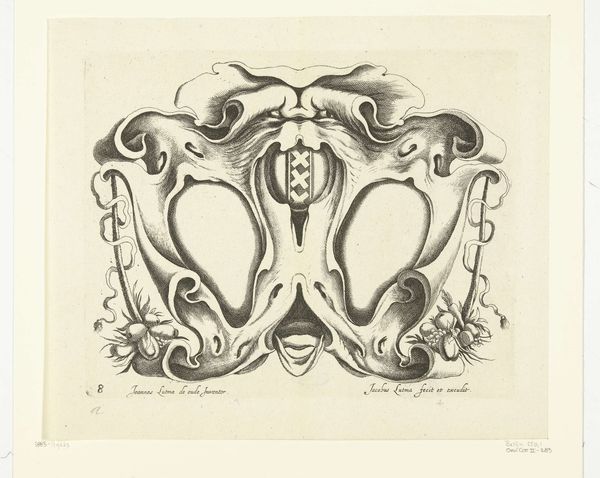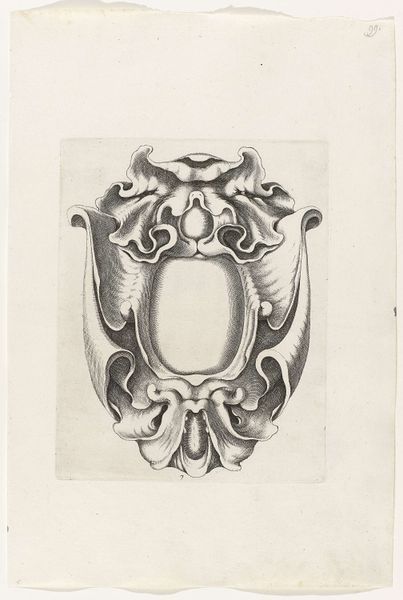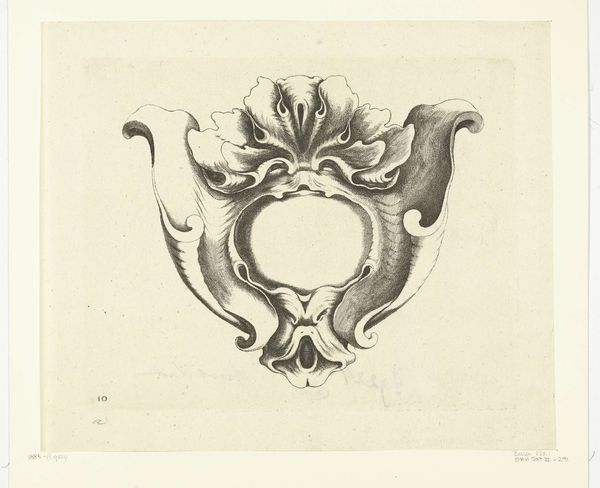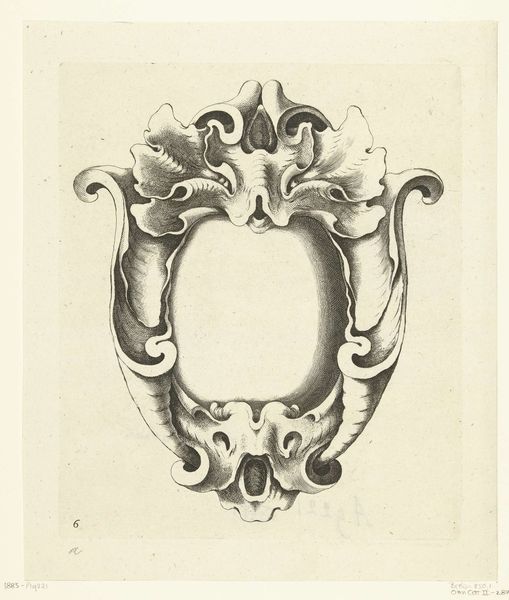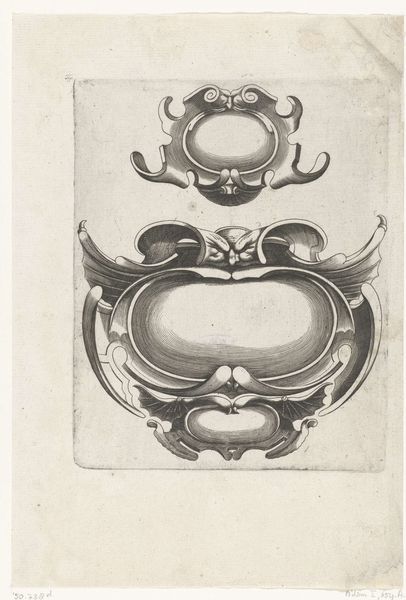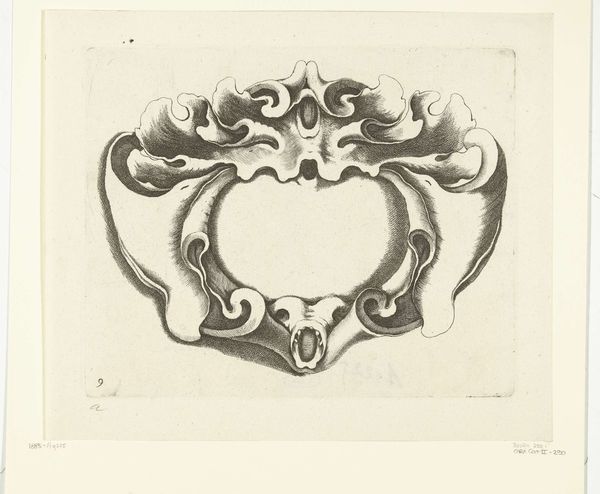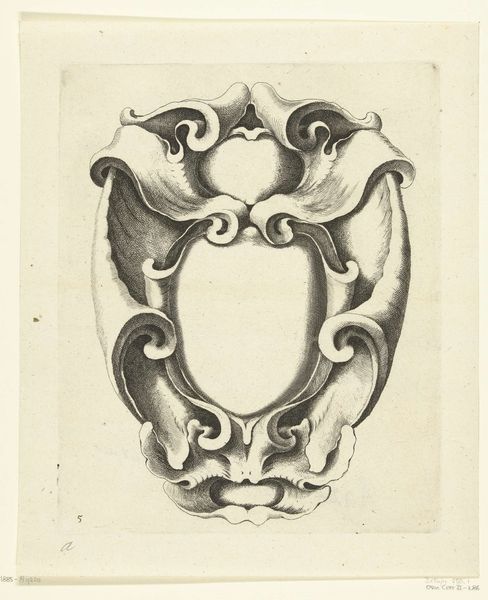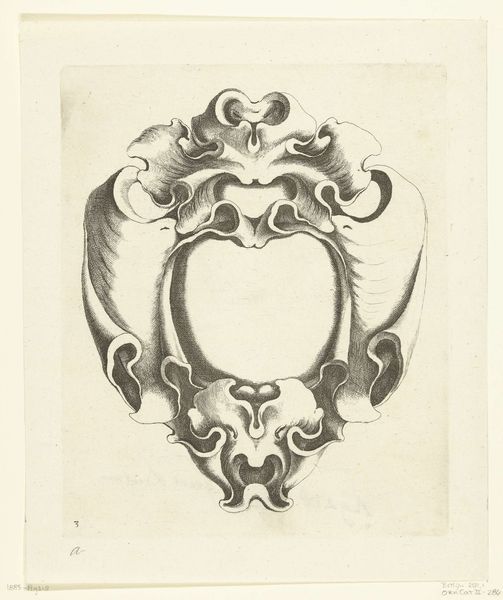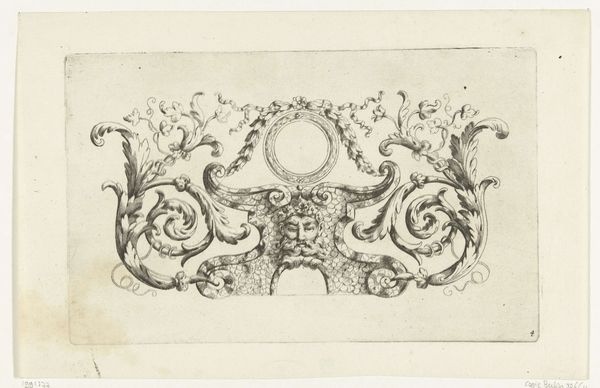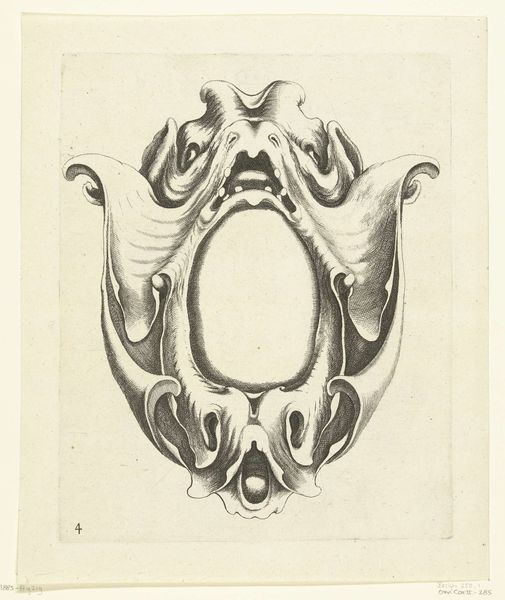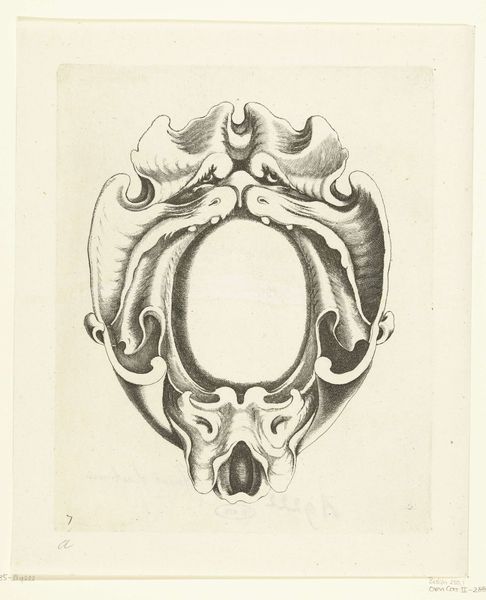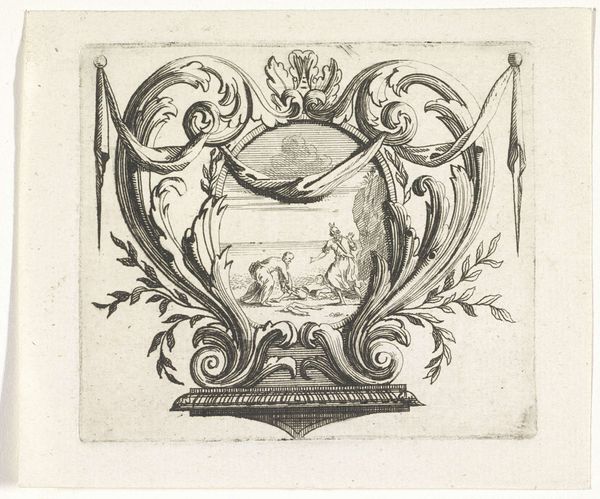
drawing, print, engraving
#
drawing
#
baroque
# print
#
form
#
geometric
#
line
#
engraving
Dimensions: height 184 mm, width 224 mm
Copyright: Rijks Museum: Open Domain
Editor: This is Jacob Lutma’s “Hoofdvormige cartouche”, an engraving and print from around 1654 to 1678, residing in the Rijksmuseum. It strikes me as incredibly ornate, almost excessively so. What historical forces might have influenced this style? Curator: Good eye. Given the Baroque style, it is interesting to see the rise of powerful, wealthy merchant classes in the Dutch Republic and their need to establish and entrench themselves within the sphere of aristocratic class display. This form is geometric and appears to have voids for text, implying these 'cartouches' served practical roles. Do you think this particular piece reveals something about the society that created it, or the individuals commissioning such works? Editor: I'd guess this form indicates a wealthy society, but was it intended to indicate power or authority in a society where merchants held increasing economic sway? Did the Baroque style help bridge a gap, connecting new economic classes to familiar modes of aristocratic visual rhetoric? Curator: Exactly. Consider how institutions like guilds also regulated and commissioned artworks. A piece like this, while decorative, could also project the collective power and refined taste of an entire merchant group or civic body. Think about how architectural ornament served that role. How do you imagine that dynamic working at the time? Editor: So the cartouche wasn't merely about individual status but collective identity? Perhaps this kind of form also helped these newly empowered groups assert themselves in a visually powerful language that also connected with established traditions? Curator: Precisely. This period saw visual art playing a crucial role in solidifying new socio-economic power dynamics and it gives the geometric Baroque cartouche new life beyond its aesthetics, doesn’t it? Editor: Absolutely! I'm now thinking about the Baroque through a social and political lens, and it enriches my understanding considerably. Curator: Indeed! Now you see art not just as beautiful objects but social actors within history.
Comments
No comments
Be the first to comment and join the conversation on the ultimate creative platform.
